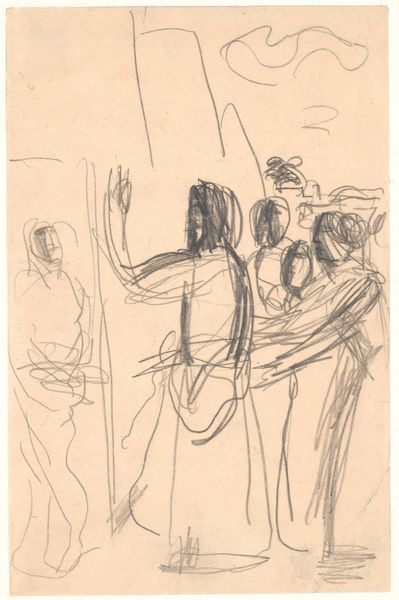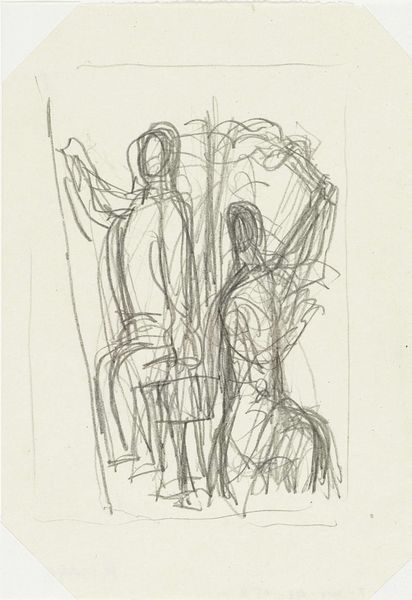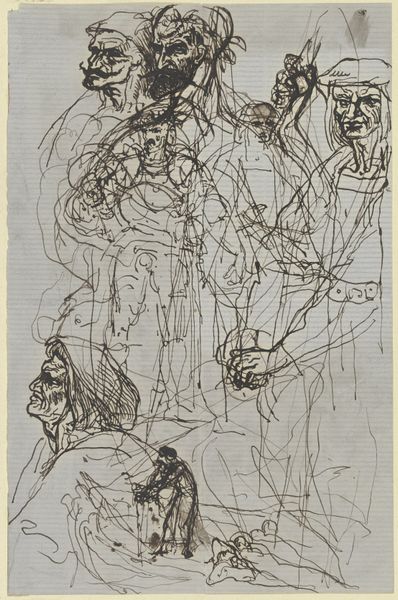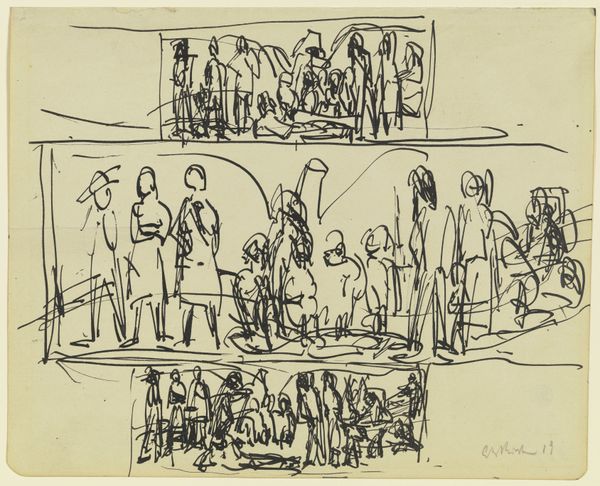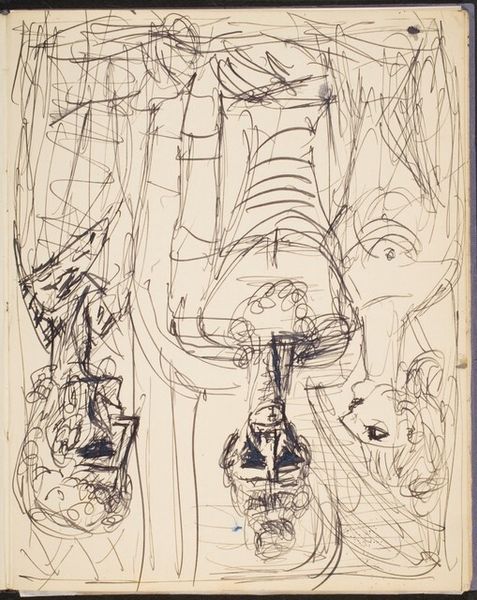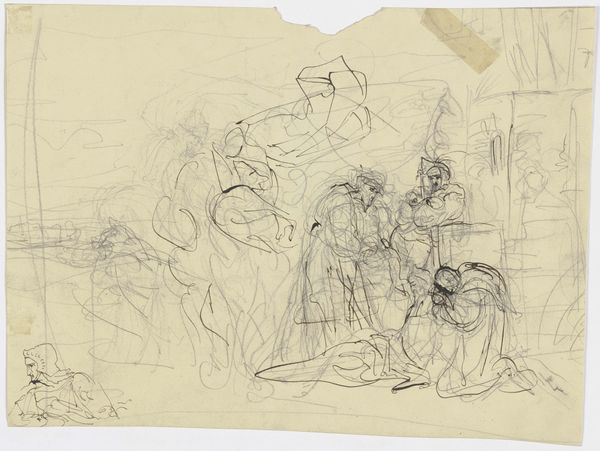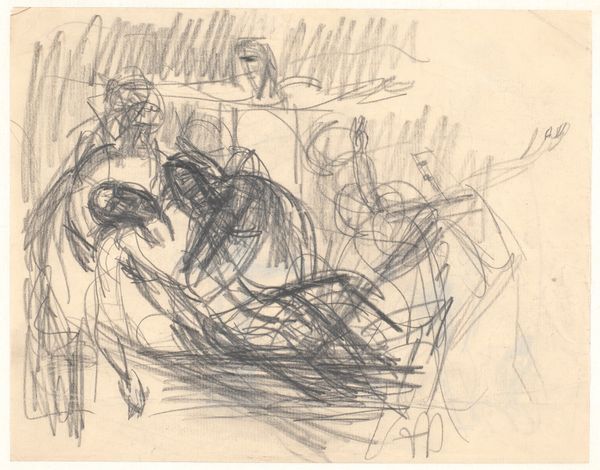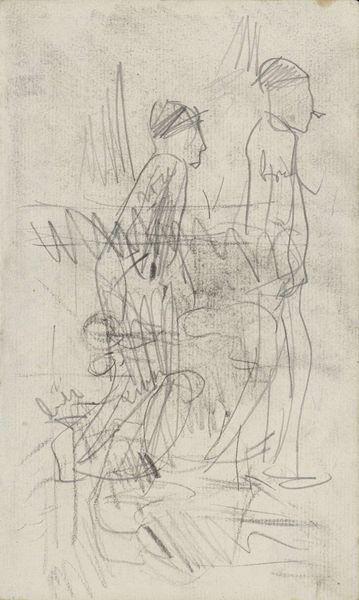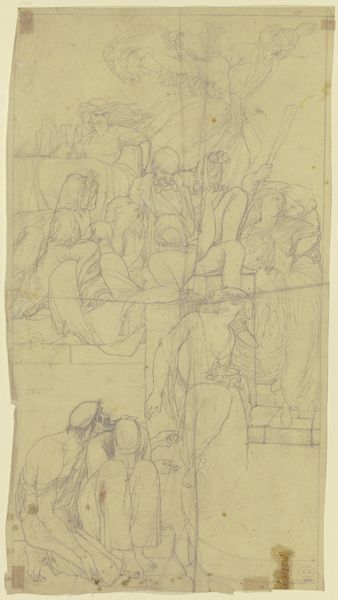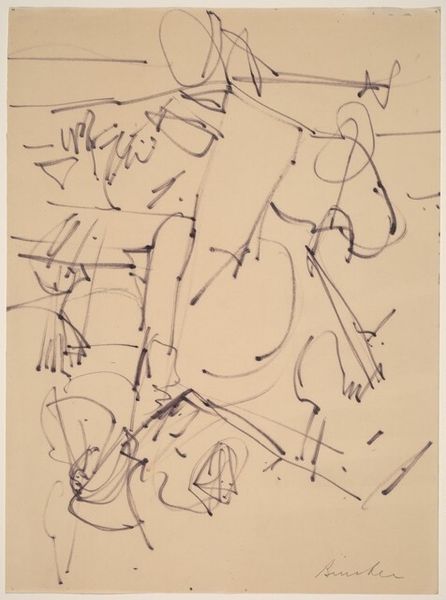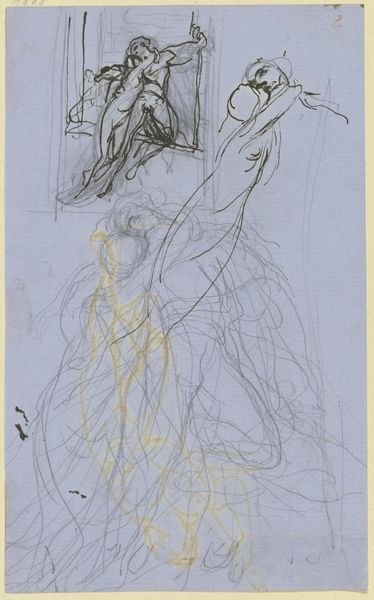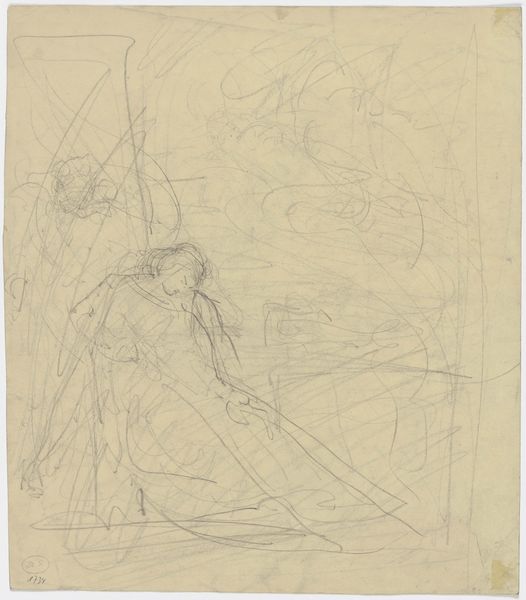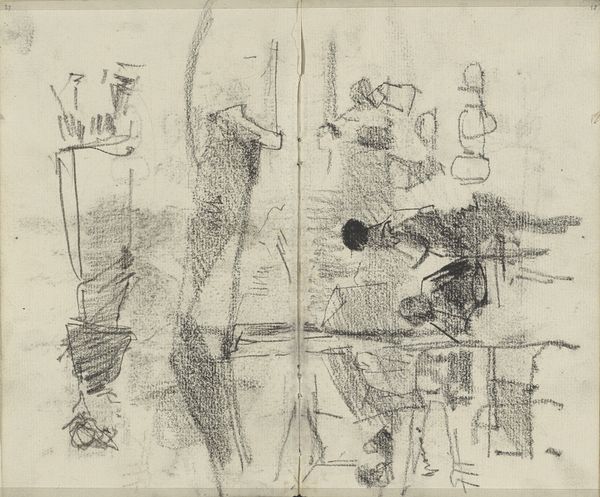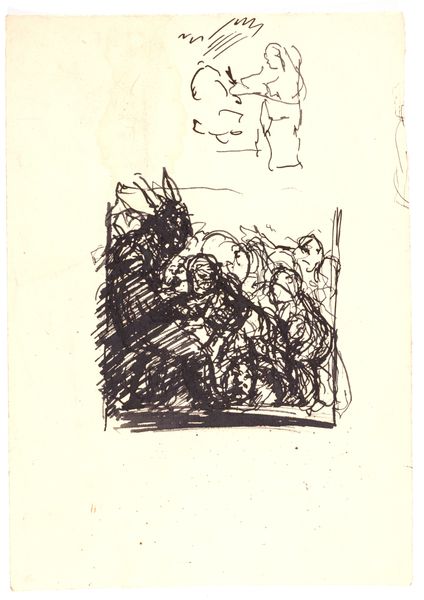
drawing, pencil
#
drawing
#
narrative-art
#
figuration
#
pencil
#
history-painting
Dimensions: 260 mm (height) x 170 mm (width) (bladmaal)
Curator: Karl Isakson’s 1918 pencil drawing, "Soldaterne kaster terninger om Kristi kjortel," offers a stark rendition of a biblical scene, currently residing at the SMK - Statens Museum for Kunst. The literal translation of the title would be something akin to 'The soldiers cast dice for Christ's robe'. Editor: The energy in this sketch is immediately striking. The hasty lines give a real sense of urgency and disorder. It definitely captures a disturbing indifference through its minimalist design. Curator: Indeed. Consider the context—1918, late in the First World War. Isakson, despite living in neutral Denmark, was deeply affected by the conflict, which perhaps explains the somewhat savage and dispassionate depiction. His choice of simple pencil and paper underscores this starkness. Editor: I find it interesting how Isakson emphasizes the soldiers' figures in the foreground and contrasts with the crosses almost disappearing into the background, de-emphasizing their presence. This directs the eye toward those human actors and actions; it makes it almost like a mundane depiction of brutality, and their greed. Curator: Yes, the very act of casting dice becomes a commentary on value and dehumanization during times of immense material loss and destruction of human life. What is held sacred is debased into mere possession. The soldiers become synecdoche for society at large during that terrible time. Editor: Looking closer, notice the use of shadow around the helmets, those black holes emphasize that inhuman element. In purely compositional terms, the varying weights of lines—from frenzied scribbles to firm outlines—create a tense, almost volatile surface that is very evocative. It creates a tension that conveys so much of its meaning and story, the crosses, like barely sketched absences, and the soldiers in the foreground are much more definite, full of darker heavier lines and shadings. Curator: I think it is really interesting how the quick strokes can allow him to speak about events outside the picture plain. By rendering them somewhat anonymous with his choices on face expression and darker shadows, he really focuses on what they represent and become in the drawing: a cold faceless, dehumanization, almost war profiteering of belief and hope, represented in Christ and those present that have to watch from nearby. Editor: So the raw intensity of line coupled with historical context provides insight to create what I believe can be viewed as a dark moment, almost one without a chance of hope for that to change. I find that bleak perspective quite potent in capturing the psychological weight of those times, not only through the actual scene of religious persecution shown, but because it reflects human behaviour within wider society during periods of social hardship and instability.
Comments
No comments
Be the first to comment and join the conversation on the ultimate creative platform.
